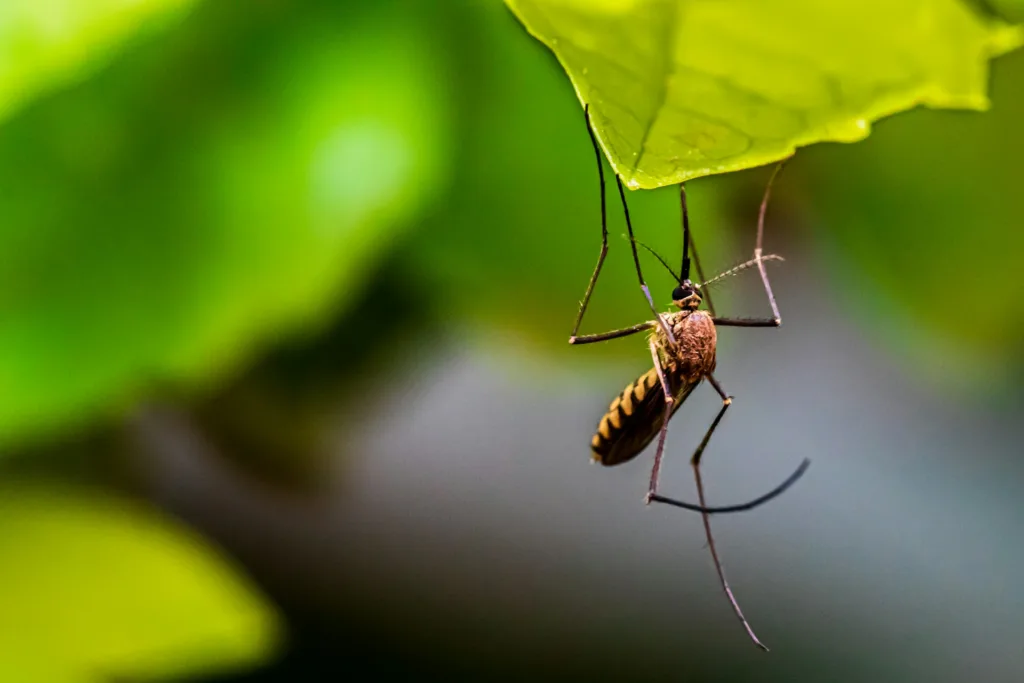A comprehensive understanding of how antimalarial drugs operate requires delving into the intricate web of the parasite’s life cycle.
Unraveling the complex interplay between these medications and the malaria-causing organism unveils a sophisticated battle at the molecular level, where scientific strategies intersect with the parasite’s complex biological processes.
Transmission to Humans
Initiating the cycle, an infected mosquito injects sporozoites into a person’s bloodstream during a bite. These sporozoites then embark on a journey to the liver, where they undergo maturation and replication in preparation for the next stage.
This complex process involves evasion of the host’s immune system and precise molecular interactions, ensuring the parasite’s survival and proliferation within the liver cells. Understanding these intricacies aids in developing drugs that target the liver stage, a critical juncture in malaria infection.
Blood Stage Replication
Upon maturation, parasites re-enter the bloodstream, invading red blood cells and inducing symptomatic manifestations.
- A subset of these parasites transforms into sexual forms known as gametocytes, ensuring the continuation of the cycle when ingested by another mosquito.
- This intricate dance between the parasite and host cells involves a series of molecular events, including the parasite’s ability to evade immune detection.
- Drugs targeting the blood stage aim to disrupt these interactions, curbing the severity of symptoms and preventing further parasite propagation.
Mechanisms of Antimalarial Drugs
Antimalarial drugs employ a strategic approach, targeting specific stages of the parasite’s life cycle with the ultimate goal of eradicating it from the human body. This comprehensive strategy involves disrupting key steps to impede the disease’s progression.
1. Inhibition of Liver Stage Development
Certain drugs, such as primaquine, act during the liver stage, inhibiting parasite development and limiting their entry into the bloodstream. By impeding this pivotal phase, these medications effectively reduce the overall parasite load within the host.
2. Suppression of Blood Stage Replication
Another crucial facet of antimalarial drugs involves suppressing the replication of parasites within the bloodstream. BioRxiv details how drugs like chloroquine interfere with the parasite’s ability to digest hemoglobin, an essential process for its survival in the host’s red blood cells.
This targeted disruption of the blood stage aims to alleviate symptomatic manifestations, reduce the severity of the infection, and prevent complications associated with unchecked parasite replication.
3. Prevention of Gametocyte Formation
- Beyond the clinical symptoms, antimalarial drugs also target the formation of gametocytes, the sexual forms of the parasite.
- Drugs like artemisinin-based combination therapies (ACTs) aim to interrupt this stage, reducing the transmission potential of the parasites to mosquitoes and breaking the cycle of infection.
- Understanding the molecular events driving gametocyte formation provides insights into designing drugs that not only treat clinical symptoms but also contribute to malaria control on a broader scale.
4. Targeting Mosquito Stages
In recent years, research has extended to targeting the stages of the parasite within mosquitoes, aiming to break the transmission cycle.
This involves developing drugs that inhibit the development of the parasite within mosquitoes, potentially reducing the overall burden of malaria in endemic regions.
5. Multi-Stage Approaches
The future of antimalarial drug development is increasingly focused on multi-stage approaches. Combining drugs that target different stages of the parasite’s life cycle enhances efficacy and reduces the risk of developing resistance.
This holistic strategy involves ongoing research to identify novel drug targets, optimize existing drug combinations, and address the evolving challenges posed by drug-resistant strains of the malaria parasite.
FAQs on How Antimalarial Drugs Work
Q1: How do antimalarial drugs target the liver stage of the parasite’s life cycle?
Antimalarials like primaquine act during the liver stage by inhibiting the development of parasites after they enter the human body. These drugs specifically target the liver cells, preventing the parasites from progressing to the next stage.
Q2: What mechanisms do antimalarials employ to disrupt nucleic acid synthesis in the parasite?
Antimalarials, exemplified by artemisinin derivatives and mefloquine, intricately disrupt nucleic acid synthesis by targeting the intricate processes pivotal to the replication of the parasite’s genetic material.
- These medications specifically interfere with the synthesis of DNA and RNA, crucial components for the parasite’s reproduction.
- By obstructing these fundamental processes, antimalarials impede the parasite’s ability to multiply within the host.
- This targeted disruption not only curtails the immediate infection but also serves as a strategic measure to combat the development of resistant strains, contributing to sustained efficacy in malaria treatment.
Q3: How does atovaquone, a component of Malarone, impact the parasite’s mitochondrial function?
Atovaquone disrupts the mitochondrial function of the malaria parasite, affecting its energy production.
By targeting the parasite’s energy source, this drug hinders its growth and replication, contributing to the overall antimalarial effect.
Q4: What role do combination therapies play in combating drug resistance?
Combination therapies, a cornerstone in the battle against drug resistance, deploy a tactical blend of antimalarial drugs with distinct mechanisms of action.
- By utilizing multiple agents simultaneously, these therapies create a formidable barrier, making it harder for parasites to develop resistance.
- The synergy of different drugs addresses the heterogeneous nature of malaria parasites, hindering their ability to adapt uniformly.
- This strategic approach not only enhances treatment efficacy but also prolongs the lifespan of antimalarials by thwarting the emergence of resistance.
As the field of antimalarial research advances, the refinement and optimization of combination therapies remain integral to staying ahead of evolving resistance patterns and ensuring effective malaria control.
Q5: How do antimalarials prevent the detoxification of heme in the parasite?
Antimalarials such as chloroquine and quinine prevent the detoxification of heme – a byproduct of hemoglobin digestion by the parasite. By inhibiting this process, these drugs lead to the accumulation of toxic heme within the parasite, ultimately causing its death.
Q6: Why is continuous research and development crucial in the context of antimalarial drugs?
Continuous research is essential to identify new drug targets and improve existing formulations, addressing the challenge of drug-resistant malaria parasites.
Ongoing efforts aim to stay ahead of the evolving nature of drug resistance, ensuring the sustained effectiveness of antimalarials in malaria control.
Wrapping Up
Understanding the intricate interplay of the malaria parasite’s life cycle and the mechanisms of antimalarial drugs provides a foundation for ongoing research and the development of more effective interventions.
From targeting specific stages within the human host to considering the transmission potential to mosquitoes, the quest for innovative antimalarial strategies continues to evolve.

